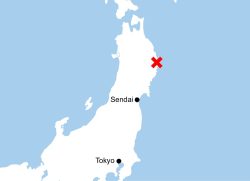15:51 JST, September 19, 2024
Land prices rose nationwide and recorded the highest rate of increase since the bubble economy era. It can be said that this reflects the current economic situation, which is being vitalized.
Furthermore, it is important to link this trend to a virtuous economic cycle in which both prices and wages rise.
The national average of land prices for all categories of use as of July 1 this year increased by 1.4% from a year earlier, according to a report on benchmark land values released by the Land, Infrastructure, Transport and Tourism Ministry. It marked the third consecutive annual increase and the highest rate of increase in 33 years.
This was largely due to commercial land prices in the Tokyo and Osaka areas both showing high levels of growth — 7% and 6%, respectively — in response to the expanded demand for stores and hotels, backed by the full-fledged recovery in the number of visitors to Japan.
Driven by low interest rates, condominiums are in high demand and residential land prices also rose in the central parts of the three major urban hubs of Tokyo, Osaka and Nagoya.
In regional areas, too, both commercial and residential land prices rose for a second consecutive year.
The Japanese economy is at a turning point in its transition from the past approach of focusing on cutting costs to a growth-oriented economy in which both prices and wages rise.
The gradual rise in land prices can be expected to boost the sentiment of businesses and households by increasing the values of their assets, thereby promoting a virtuous economic cycle.
However, it is mainly urban areas that receive the benefits of economic vitalization. Local economies have been ravaged by the declining population, and the reality is that land prices are decreasing in about half of all surveyed locations.
The Noto Peninsula Earthquake in January has also had a serious impact, and all 10 sites with the highest rates of decline nationwide were in disaster-stricken areas such as Wajima and the town of Noto, both in Ishikawa Prefecture.
The vitalization of local areas is a serious issue, and it is necessary to pay attention to the large impact attracting factories has, as shown in the latest land prices survey.
In the town of Kikuyo, Kumamoto Prefecture, where global chipmaker Taiwan Semiconductor Manufacturing Co. has set up a base of operations, the rate of increase in commercial land prices was the third and seventh highest in Japan, while that of the neighboring town of Ozu topped the list.
Land prices are also rising markedly in Chitose, Hokkaido, where a plant owned by Rapidus Corp., which aims to domestically produce advanced semiconductors, is being built.
In consideration of the risk of China in terms of economic security, in addition to the weak yen, there are moves by Japanese companies to shift their production bases, which had been relocated overseas, back to Japan. The Japanese government should support this trend through the tax system and other means.
Further support for the tourism industry will also be important to stimulate local areas.
In the resort village of Hakuba, Nagano Prefecture, the rate of increase in commercial land prices is the fourth highest in the nation. In Takayama, Gifu Prefecture, which is popular for its historic townscape, an increase in investment demand for hotels also has pushed up land prices.
Meanwhile, the Bank of Japan is normalizing its monetary policy, and a world with interest rates has arrived in earnest. It will be necessary to pay attention to whether there is any risk of the real estate market cooling down.
(From The Yomiuri Shimbun, Sept. 19, 2024)
"Editorial & Columns" POPULAR ARTICLE
-

Artificial Intelligence Expands Possibilities for Foreign Language Learners
-

Build Intellectual, Physical Strength, As Well As Communicative Power / Japan Should Move from Beneficiary to Shaper of World Order
-

Global Economy in Turmoil: Prevent Free Trade System from Going Adrift / Risks to Financial Markets Must Be Heeded
-

Japan-China Strain Set to Persist as Beijing Officials Self-Interestedly Bash Tokyo; Takaichi Unlikely to Back Down
-

French and German Ambassadors to Japan Call for Democracies to Unite in Defense against Russian Disinformation
JN ACCESS RANKING
-

As Chinese Tourists Shun Japan, Hotels and Stores Suffer
-

Osaka-Kansai Expo’s Economic Impact Estimated at ¥3.6 Trillion, Takes Actual Visitor Numbers into Account
-

Japan Govt Adopts Measures to Curb Mega Solar Power Plant Projects Amid Environmental Concerns
-

BOJ Gov. Ueda: Highly Likely Mechanism for Rising Wages, Prices Will Be Maintained
-

Economic Security Panels Debate Supply Chains, Rare Earths; Participants Emphasize Importance of Cooperation Among Allies




















